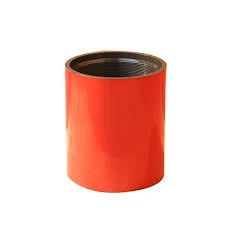- Afrikaans
- Albanian
- Amharic
- Arabic
- Armenian
- Azerbaijani
- Basque
- Belarusian
- Bengali
- Bosnian
- Bulgarian
- Catalan
- Cebuano
- Corsican
- Croatian
- Czech
- Danish
- Dutch
- English
- Esperanto
- Estonian
- Finnish
- French
- Frisian
- Galician
- Georgian
- German
- Greek
- Gujarati
- Haitian Creole
- hausa
- hawaiian
- Hebrew
- Hindi
- Miao
- Hungarian
- Icelandic
- igbo
- Indonesian
- irish
- Italian
- Japanese
- Javanese
- Kannada
- kazakh
- Khmer
- Rwandese
- Korean
- Kurdish
- Kyrgyz
- Lao
- Latin
- Latvian
- Lithuanian
- Luxembourgish
- Macedonian
- Malgashi
- Malay
- Malayalam
- Maltese
- Maori
- Marathi
- Mongolian
- Myanmar
- Nepali
- Norwegian
- Norwegian
- Occitan
- Pashto
- Persian
- Polish
- Portuguese
- Punjabi
- Romanian
- Russian
- Samoan
- Scottish Gaelic
- Serbian
- Sesotho
- Shona
- Sindhi
- Sinhala
- Slovak
- Slovenian
- Somali
- Spanish
- Sundanese
- Swahili
- Swedish
- Tagalog
- Tajik
- Tamil
- Tatar
- Telugu
- Thai
- Turkish
- Turkmen
- Ukrainian
- Urdu
- Uighur
- Uzbek
- Vietnamese
- Welsh
- Bantu
- Yiddish
- Yoruba
- Zulu
High-Quality Coupling Stainless Steel Fittings for Reliable Connections
Understanding Coupling Stainless Steel Fittings
Coupling stainless steel fittings play an essential role in modern plumbing and industrial applications. They are the key components that connect two pipes or tubes, enabling the seamless flow of liquids and gases. Made primarily from stainless steel, these fittings offer superior durability, resistance to corrosion, and excellent performance under various environmental conditions.
What are Coupling Stainless Steel Fittings?
Coupling fittings are devices designed to join two sections of pipe. In the context of stainless steel, these fittings are widely used due to the inherent characteristics of stainless steel, which withstands extreme temperatures and pressures, making them ideal for a range of industries including oil and gas, food processing, and water treatment.
There are different types of couplings, including threaded couplers, welded couplers, and slip-on couplers. Each type serves a specific purpose based on the system requirements and the materials being used.
Advantages of Using Stainless Steel Couplings
1. Corrosion Resistance Stainless steel is renowned for its resistance to corrosion, especially in environments where chemicals and moisture are present. This quality significantly extends the lifespan of the fittings compared to those made from other materials like iron or plastic.
2. Strength and Durability Stainless steel fittings are robust and can handle high pressure and temperature fluctuations without deforming or failing. This makes them a reliable choice for critical applications where safety and performance are paramount.
3. Hygienic Properties In industries like food and beverage, hygiene is crucial. Stainless steel has a smooth surface finish that resists bacteria buildup, ensuring that the fluids transported remain uncontaminated.
coupling stainless steel fitting

4. Versatility Coupling stainless steel fittings can be used in various applications, from residential plumbing to complex industrial piping systems. Their adaptability makes them suitable for connecting different types of pipes made from diverse materials.
Selecting the Right Coupling Fitting
When choosing coupling stainless steel fittings, several factors need to be considered
- Size The diameter of the pipes being connected will dictate the size of the coupling required. It is crucial to match the fitting size to prevent leaks.
- Type Depending on the installation method and application, one may opt for threaded, slip-on, or welded couplings. Each has its installation process and applications suited to different situations.
- Grade of Stainless Steel There are various grades of stainless steel, each offering different characteristics. For instance, 304 stainless steel is commonly used due to its versatility, while 316 stainless steel offers better corrosion resistance, particularly in marine environments.
Installation and Maintenance Tips
Proper installation is vital to ensure the longevity and functionality of coupling stainless steel fittings. Always follow the manufacturer's guidelines and industry standards during installation. Regular inspections should be conducted to check for signs of wear, corrosion, or leakage, and any damaged fittings should be replaced promptly to avoid system failures.
In conclusion, coupling stainless steel fittings are indispensable in many modern applications due to their durability, corrosion resistance, and versatility. By understanding their properties and applications, one can make informed decisions when selecting fittings for specific projects, ensuring efficient and reliable performance in any piping system.
-
Well Casing Extension Couplings – Applications and InstallationNewsJun.06,2025
-
Types of Crossover Subs in Drilling & CompletionNewsJun.06,2025
-
Key Features of High-Quality Tubing Pup JointsNewsJun.06,2025
-
Installation and Maintenance Tips for Steel Couplings for PipeNewsJun.06,2025
-
How to Select the Right Pup Joint for Oil & Gas OperationsNewsJun.06,2025
-
Applications of Stainless Steel Pipe CouplingsNewsJun.06,2025







